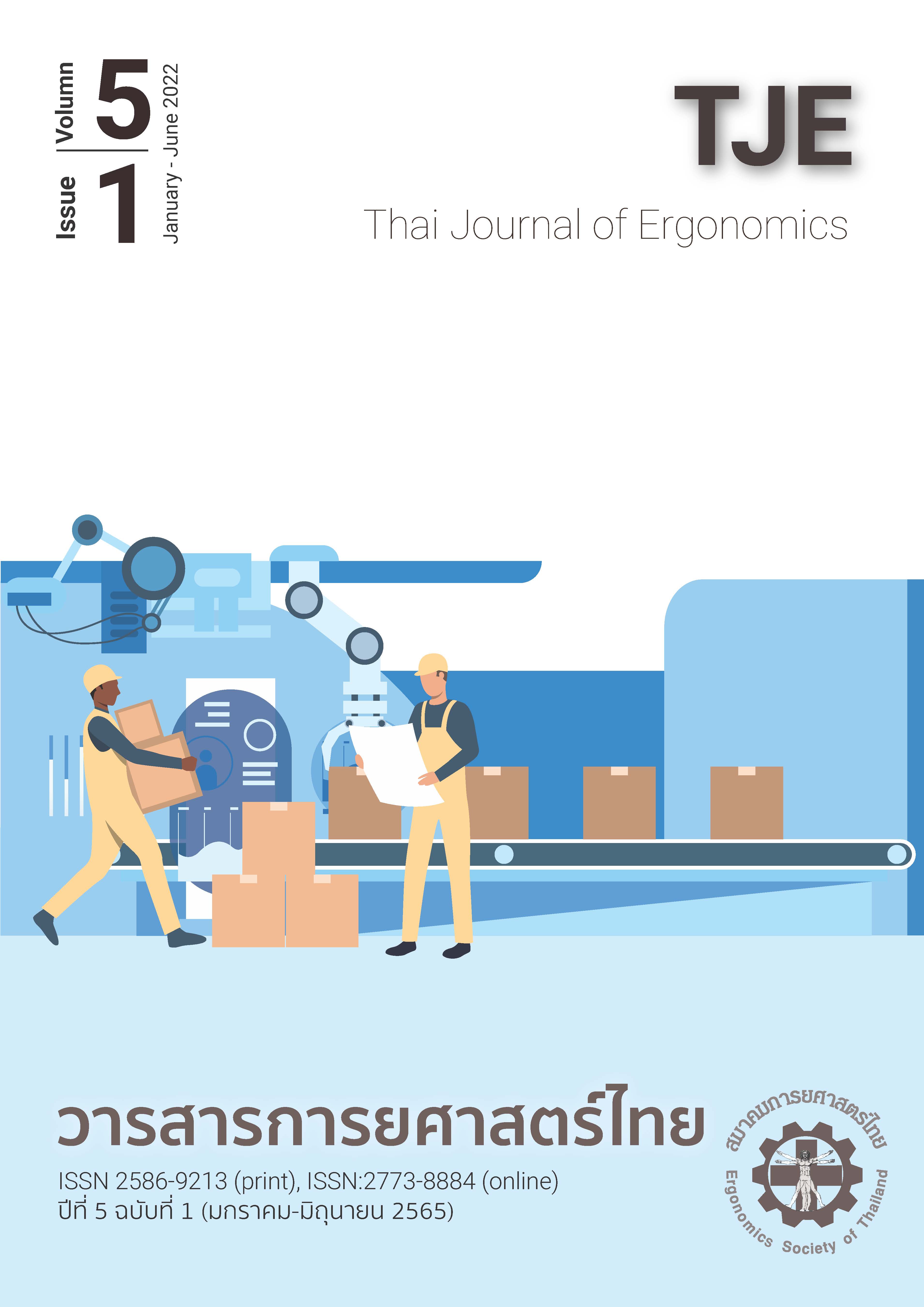Chronic pain and work-related musculoskeletal disorders
Main Article Content
Abstract
Pain is an important mechanism of the body that helps prevent potential harm. Pain is initiated by the stimulation of nociceptors in the peripheral nerves and pass through the spinal cord. The thalamus and other parts of the brain are also involved in emotions and thoughts. The brain and spinal cord link associated with pain is known as the pain matrix. In chronic pain, there is a neurological adaptation linked to the pain matrix, as well as a high sensitivity to pain response. Stress is centered on the hypothalamus-pituitary-adrenal (HPA) axis. Stress is also associated with pain. If stress is poorly managed, it will result in increased pain. Treatment of chronic pain from musculoskeletal disorders requires holistic approaches.
Article Details

This work is licensed under a Creative Commons Attribution-NonCommercial-NoDerivatives 4.0 International License.
References
Widanarko B, Legg S, Devereux J, Stevenson M. The combined effect of physical, psychosocial/organisational and/or environmental risk factors on the presence of work-related musculoskeletal symptoms and its consequences. Appl Ergon. 2014;45(6):1610-21.
International Association for the Study of Pain. IASP Terminology Background 2011 [Available from: https://www.iasp-pain.org/resources/terminology/.
Rosemberg S, Nagahashi Marie SK, Kliemann S. Congenital insensitivity to pain with anhidrosis (hereditary sensory and autonomic neuropathy type IV). Pediatr Neurol. 1994;11(1):50-6.
Steeds CE. The anatomy and physiology of pain. Surgery (Oxford). 2016;34(2):55-9.
Monroe TB, Gore JC, Bruehl SP, Benningfield MM, Dietrich MS, Chen LM, et al. Sex differences in psychophysical and neurophysiological responses to pain in older adults: a cross-sectional study. Biol Sex Differ. 2015;6(1):25.
Merskey H. Pain terms. Classification of chronic pain. 1994.
Latremoliere A, Woolf CJ. Central sensitization: a generator of pain hypersensitivity by central neural plasticity. J Pain. 2009;10(9):895-926.
Pelletier R, Higgins J, Bourbonnais D. Is neuroplasticity in the central nervous system the missing link to our understanding of chronic musculoskeletal disorders? BMC Musculoskelet Disord. 2015;16(1):25.
Woolf CJ. Central sensitization: implications for the diagnosis and treatment of pain. Pain. 2011;152(3 Suppl):S2-S15.
George SZ, Stryker SE. Fear-Avoidance Beliefs and Clinical Outcomes for Patients Seeking Outpatient Physical Therapy for Musculoskeletal Pain Conditions. J Orthop Sports Phys Ther. 2011;41(4):249-59.
Hannibal KE, Bishop MD. Chronic stress, cortisol dysfunction, and pain: a psychoneuroendocrine rationale for stress management in pain rehabilitation. Phys Ther. 2014;94(12):1816-25.
Roditi D, Robinson ME. The role of psychological interventions in the management of patients with chronic pain. Psychol Res Behav Manag. 2011;4:41-9.


